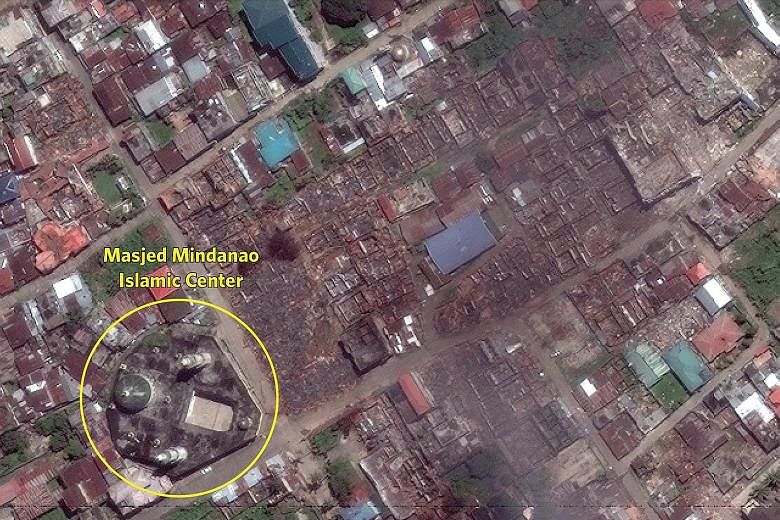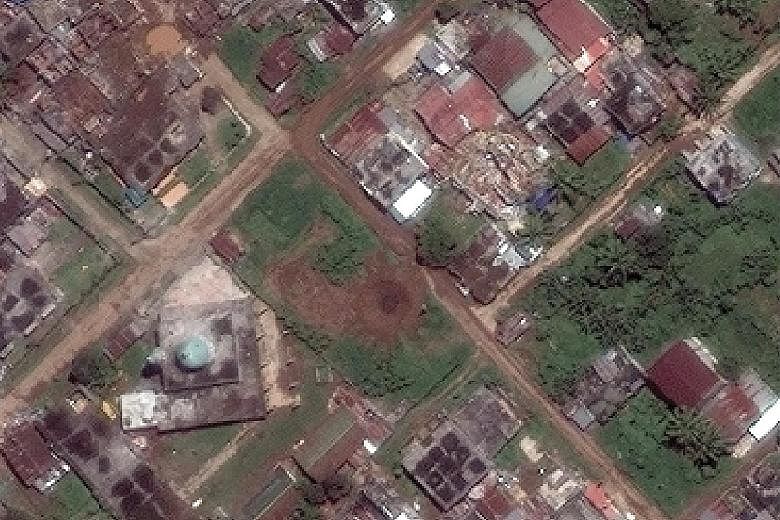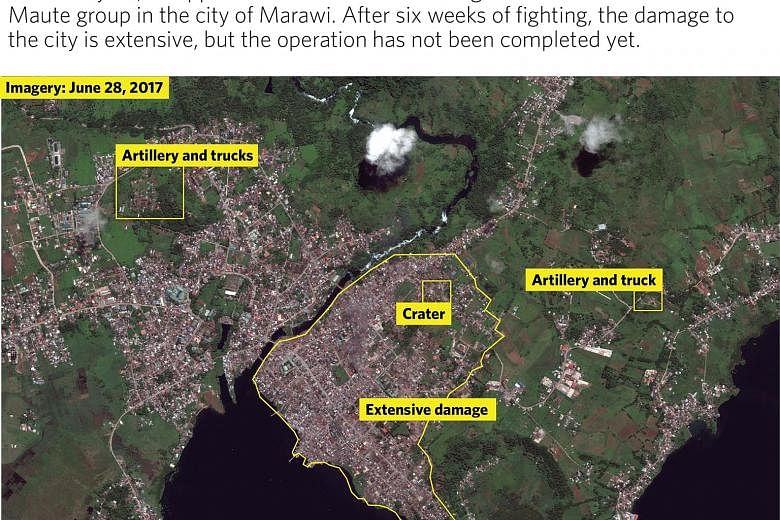Weeks of air strikes and artillery barrages have reduced half of the southern Philippine city of Marawi into a wide swathe of pummelled buildings, obliterated houses and bomb craters in a scene likened to that in Mosul, in Iraq.
Satellite images from Stratfor, a private intelligence firm, showed half the neighbourhoods in Marawi, once home to more than 200,000, affected by bombings, with entire city blocks flattened.
Fires erupt almost every day, set off either by bombing runs or by the Muslim militants who have stubbornly clung to chokepoints at the centre of Marawi, just across a river from the provincial capitol compound.
"We didn't expect it to be that big. We heard about the air strikes and artillery, but it is pretty bad throughout the city," Mr Sim Tack, a senior analyst at Stratfor, told CNN.
"When I have looked at other war zones, the closest thing to compare (Marawi) to is Mosul (Iraq). I haven't seen battlefields where all houses were destroyed like that."
About 500 gunmen stormed Marawi on May 23 in an audacious bid to occupy it as a "province" of the Islamic State in Iraq and Syria (ISIS).
They managed to seize large parts of the city, rolling back ground assaults with anti-tank weapons and sniper fire. They moved around using bomb-proof tunnels to get to weapons, ammunition and provisions they had stashed around the city even before the fighting began. They took cover inside fortified buildings and basements.
Government troops have been pummelling rebel-held districts with air strikes and artillery barrages. Special forces units battle for each house and each street.
Security forces have boxed the militants inside a 1km area in Bangolo, once a thriving commercial district.
Satellite images from Stratfor showed this district and much of the areas around it reduced to rubble.
One of the only buildings that is left standing is the Masjed Mindanao Islamic Centre, in what could have been a deliberate move by the authorities. General Eduardo Ano, the military chief, has said his men will not bomb the mosque, in deference to Muslims, even though intelligence sources believe the militants' leader who masterminded the siege, Isnilon Hapilon, is hiding there, surrounded by hostages being used as "human shields".
Another photo shows a large crater on the ground, which appears to have been the result of an air strike.
"The Philippines military and government have had no choice" but to hit Marawi as heavily as they have done until now, said Mr Scott Stewart, vice-president of analysis for Stratfor. "We saw in Iraq and Syria what happens when you don't move fast" to dislodge militants from urban areas.
Despite few signs that security forces will be retaking Marawi anytime soon, the Philippine government has already started making reconstruction plans to rebuild the city. President Rodrigo Duterte last week created a task force and set aside 20 billion pesos (S$546 million) to rebuild what was once a centre of Islamic culture and tradition.
Yet, when asked when the city's population can head back to their homes to rebuild their own lives, security officials could only say: Not yet. Not now.
In a sign that rebuilding remains in the distant future, plans are already being made to build a "tent city" for thousands of evacuees 5km away from Marawi.
Defence Secretary Delfin Lorenzana, head of the reconstruction task force, said that with the militants still holding out, civilians will risk being taken hostage if they return, even in areas not affected by the fighting. "The lesson of Marawi is that if civilians allow radicalism to spread in their areas, this is what will happen. We are hoping this will be a lesson for the rest of the country," he said yesterday.



